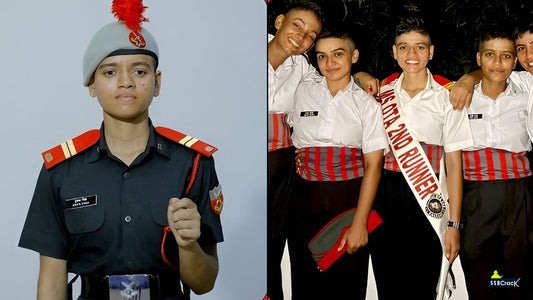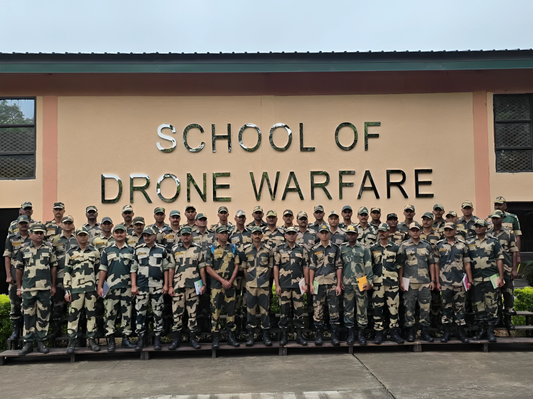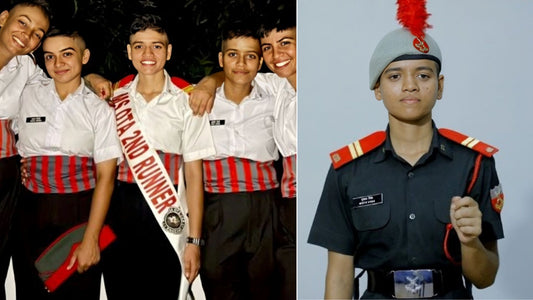Meet Subedar Major Ojit Singh: First Command Subedar Major of Northern Command

In a groundbreaking move for the Indian Army, Subedar Major Ojit Singh has been appointed as the inaugural Command Subedar Major (Comd SM) of the Northern Command. This significant development not only enhances the role of Junior Commissioned Officers (JCOs) and Other Ranks (ORs) but also marks a pivotal shift in the decision-making framework within the Army. This article delves into the implications of this appointment, the responsibilities of the Command Subedar Major, and the broader context of military leadership in India.
The Significance of the Appointment
The establishment of the Command Subedar Major position is a direct result of a directive from the Chief of Army Staff (COAS). This initiative aims to create a formal communication channel between the senior leadership of the Army and the JCOs and ORs, who are integral to the operational effectiveness of the force. The role draws inspiration from the Senior Sergeant Major positions in Western militaries, emphasizing the need for a structured approach to troop engagement and leadership.
Also Read: Meet Major Deeksha: The First Lady Officer to Earn the Balidaan Badge
Enhancing Communication
One of the primary objectives of this new role is to foster better communication between the Army's top brass and the personnel on the ground. By having a dedicated Command Subedar Major, the Army aims to ensure that the voices of JCOs and ORs are heard at higher levels of command. This initiative is expected to bridge the gap between strategic decision-making and operational realities, ultimately leading to more informed and effective leadership.
A Historic Milestone
Subedar Major Ojit Singh's appointment is not just a personal achievement; it represents a historic milestone for the Indian Army. His extensive experience and professionalism lend credibility to this new role, setting a precedent for future military leadership models. This appointment is viewed as a significant step towards recognizing the contributions of JCOs and ORs in shaping the future direction of the Army.

Responsibilities of the Command Subedar Major
As the Command Subedar Major, Ojit Singh will assume a multifaceted role that encompasses advisory, operational, and leadership responsibilities. His insights will be crucial in various areas, including policy formulation, morale enhancement, training standards, and personnel welfare.
Advisory Role
In his advisory capacity, Ojit Singh will provide guidance to the Army Commander on matters concerning JCOs and ORs. This role is akin to that of the Colonel Military Secretary, who focuses on officer-level affairs. By offering his perspective on grassroots issues, Singh will help shape policies that directly impact the welfare and effectiveness of the troops.
Operational Engagement
Beyond advisory duties, the Command Subedar Major will actively participate in operational reviews. Singh will accompany the Army Commander during visits to various units and formations, engaging directly with JCOs and ORs. These interactions will allow him to assess ground realities and relay valuable feedback to the command leadership, ensuring that decisions are informed by the experiences of those on the front lines.
Building Trust and Coordination
The introduction of the Command Subedar Major role is expected to institutionalize a deeper level of trust and coordination between Army Headquarters and field units. This is particularly important in strategically critical areas under the Northern Command's jurisdiction, where effective communication can significantly impact operational success.
Strengthening Relationships
By establishing a formal channel for communication, the Army aims to strengthen relationships between different ranks. This initiative acknowledges the vital role that JCOs and ORs play in the Army's operational core, fostering a culture of collaboration and mutual respect.
Recognizing Contributions
The appointment of Subedar Major Ojit Singh also signals a growing recognition of the contributions made by JCOs and ORs. By elevating their voices within the decision-making process, the Army is taking a significant step towards valuing the experiences and insights of all personnel, regardless of rank.
The Path Forward
As Subedar Major Ojit Singh embarks on this historic journey, the implications of his role will extend beyond the Northern Command. This initiative could serve as a model for other commands within the Indian Army, promoting a more inclusive approach to leadership and decision-making.
Setting a Precedent
The establishment of the Command Subedar Major position may pave the way for similar roles in other branches of the military. By demonstrating the effectiveness of this model, the Indian Army can enhance its operational capabilities and foster a more engaged and motivated workforce.
Future Leadership Models
The success of this initiative will likely influence future leadership models within the Indian Army. By prioritizing communication and collaboration, the Army can create a more adaptive and responsive organizational structure, better equipped to meet the challenges of modern warfare.
Conclusion
Subedar Major Ojit Singh's appointment as the first Command Subedar Major of the Northern Command marks a significant evolution in the Indian Army's leadership framework. By enhancing communication, fostering trust, and recognizing the contributions of JCOs and ORs, this initiative has the potential to reshape the future of military leadership in India. As the Army continues to adapt to the complexities of modern warfare, the insights and experiences of personnel at all levels will be crucial in guiding its strategic direction.
FAQs
What is the role of the Command Subedar Major?
The Command Subedar Major serves as an advisor to the Army Commander on matters related to JCOs and ORs, facilitating communication between senior leadership and ground personnel.
How does this appointment impact the Indian Army?
This appointment enhances communication, fosters trust, and recognizes the contributions of JCOs and ORs, ultimately leading to more informed decision-making and improved operational effectiveness.
Can we expect similar roles in other commands?
Yes, the establishment of the Command Subedar Major position may serve as a model for other commands within the Indian Army, promoting a more inclusive approach to leadership.
What are the responsibilities of Subedar Major Ojit Singh?
Ojit Singh's responsibilities include providing advisory support, participating in operational reviews, and engaging directly with JCOs and ORs to assess ground realities.
Why is this appointment significant?
This appointment represents a historic milestone for the Indian Army, recognizing the vital role of JCOs and ORs in shaping the future direction of the force.




















5 comments
Please show the picture of rank insignia.
good and nice new position especially for lower categories persons. Suggest Pl also THE REHABOLATION OF RETIRED AT THEIR OWN NATIVE PLACE
good and nice new position especially for lower categories persons. Suggest Pl also THE REHABOLATION OF RETIRED AT THEIR OWN NATIVE PLACE
Congrats but why suddenly this position came in indian army, or it was there earlier too?
this is something unique never heard of this post.